Source (Google.com.pk)
Pakistani Bridal 2011 Biography
This is one of the richest models, such as clothing art. Pakistani bridal sharara crepe satin, chiffon, Georgette and wear Silk.This was strange bridal knees and knees big flash is set to rich, full skirt has the as a symbol of dignity and honor. This dress personality on teen younger girl and mostly use on wedding occasion.
Aug 21, 2011 ... This is really amazing dressing of bridals. Pakistani girls love to wear on weddings. Pakistani Bridal Sharara originally dressed as a Muslim ...
Apr 16, 2012 ... Pakistani bridal Dresses Designer 2012 Pakistani Designer Dresses 2011, The dress of any person, is a absorption of his personality, in added.
A bride is a woman about to be married or newlywed.
The word may come from the Proto-Germanic verb root *brū-, meaning 'to cook, brew, or make a broth' which was the role of the daughter-in-law in primitive families. In Western culture, a bride may be attended by one or more bridesmaids.
Her partner, who becomes her spouse after the wedding, is referred to as the bridegroom (or groom).
The term bride appears in combination with many words, some of which are obsolete. Thus "bridegroom" is a newly married man, and "bride-bell," "bride-banquet" are old equivalents of wedding-bells, wedding-breakfast. "Bridal" (from Bride-ale), originally the wedding-feast itself, has grown into a general descriptive adjective, the bridal ceremony. The bride-cake had its origin in the Roman confarreatio, an upper-class form of marriage, the essential features of whose ceremony were the eating by the couple of a cake made of salt, water and spelt flour, and the holding by the bride of three wheat-ears, a symbol of plenty.
The cake-eating went out of fashion, but the wheat ears survived. In the Middle Ages they were either worn or carried by the bride. Eventually it became the custom for the young girls to assemble outside the church porch and throw grains of wheat over the bride, and afterwards a scramble for the grains took place. In time the wheat-grains came to be cooked into thin dry biscuits, which were broken over the bride's head, as is the custom in Scotland today, an oatmeal cake being used. In Elizabeth's reign these biscuits began to take the form of small rectangular cakes made of eggs, milk, sugar, currants and spices. Every wedding guest had one at least, and the whole collection were thrown at the bride the instant she crossed the threshold. Those that lighted on her head or shoulders were most prized by the scramblers. At last these cakes became amalgamated into a large one that took on its full glories of almond paste and ornaments during Charles II's time. But even today in rural parishes, e.g. north Notts, wheat is thrown over the bridal couple with the cry "Bread for life and pudding for ever," expressive of a wish that the newly wed may be always affluent. The throwing of rice, a very ancient custom but one later than the wheat, is symbolical of the wish that the bridal may be fruitful.
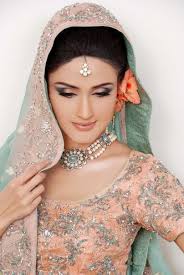



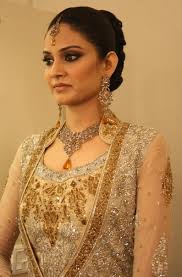
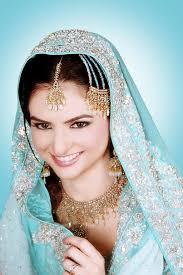



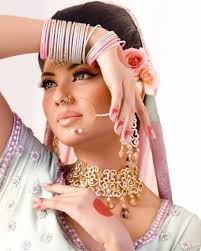

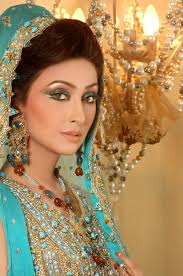
Pakistani Bridal 2011 Biography
This is really amazing dressing of bridals. Pakistani girls love to wear
on weddings. Pakistani Bridal Sharara originally dressed as a Muslim
girls for wedding occasion but has a reputation among Indian women.
This is one of the richest models, such as clothing art. Pakistani bridal sharara crepe satin, chiffon, Georgette and wear Silk.This was strange bridal knees and knees big flash is set to rich, full skirt has the as a symbol of dignity and honor. This dress personality on teen younger girl and mostly use on wedding occasion.
Aug 21, 2011 ... This is really amazing dressing of bridals. Pakistani girls love to wear on weddings. Pakistani Bridal Sharara originally dressed as a Muslim ...
Apr 16, 2012 ... Pakistani bridal Dresses Designer 2012 Pakistani Designer Dresses 2011, The dress of any person, is a absorption of his personality, in added.
A bride is a woman about to be married or newlywed.
The word may come from the Proto-Germanic verb root *brū-, meaning 'to cook, brew, or make a broth' which was the role of the daughter-in-law in primitive families. In Western culture, a bride may be attended by one or more bridesmaids.
Her partner, who becomes her spouse after the wedding, is referred to as the bridegroom (or groom).
The term bride appears in combination with many words, some of which are obsolete. Thus "bridegroom" is a newly married man, and "bride-bell," "bride-banquet" are old equivalents of wedding-bells, wedding-breakfast. "Bridal" (from Bride-ale), originally the wedding-feast itself, has grown into a general descriptive adjective, the bridal ceremony. The bride-cake had its origin in the Roman confarreatio, an upper-class form of marriage, the essential features of whose ceremony were the eating by the couple of a cake made of salt, water and spelt flour, and the holding by the bride of three wheat-ears, a symbol of plenty.
The cake-eating went out of fashion, but the wheat ears survived. In the Middle Ages they were either worn or carried by the bride. Eventually it became the custom for the young girls to assemble outside the church porch and throw grains of wheat over the bride, and afterwards a scramble for the grains took place. In time the wheat-grains came to be cooked into thin dry biscuits, which were broken over the bride's head, as is the custom in Scotland today, an oatmeal cake being used. In Elizabeth's reign these biscuits began to take the form of small rectangular cakes made of eggs, milk, sugar, currants and spices. Every wedding guest had one at least, and the whole collection were thrown at the bride the instant she crossed the threshold. Those that lighted on her head or shoulders were most prized by the scramblers. At last these cakes became amalgamated into a large one that took on its full glories of almond paste and ornaments during Charles II's time. But even today in rural parishes, e.g. north Notts, wheat is thrown over the bridal couple with the cry "Bread for life and pudding for ever," expressive of a wish that the newly wed may be always affluent. The throwing of rice, a very ancient custom but one later than the wheat, is symbolical of the wish that the bridal may be fruitful.
Pakistani Bridal 2011
Pakistani Bridal 2011
Pakistani Bridal 2011
Pakistani Bridal 2011
Pakistani Bridal 2011
Pakistani Bridal 2011
Pakistani Bridal 2011
Pakistani Bridal 2011
Pakistani Bridal 2011
Pakistani Bridal 2011
Pakistani Bridal 2011
Pakistani Bridal 2011
Pakistani Bridal 2011
No comments:
Post a Comment